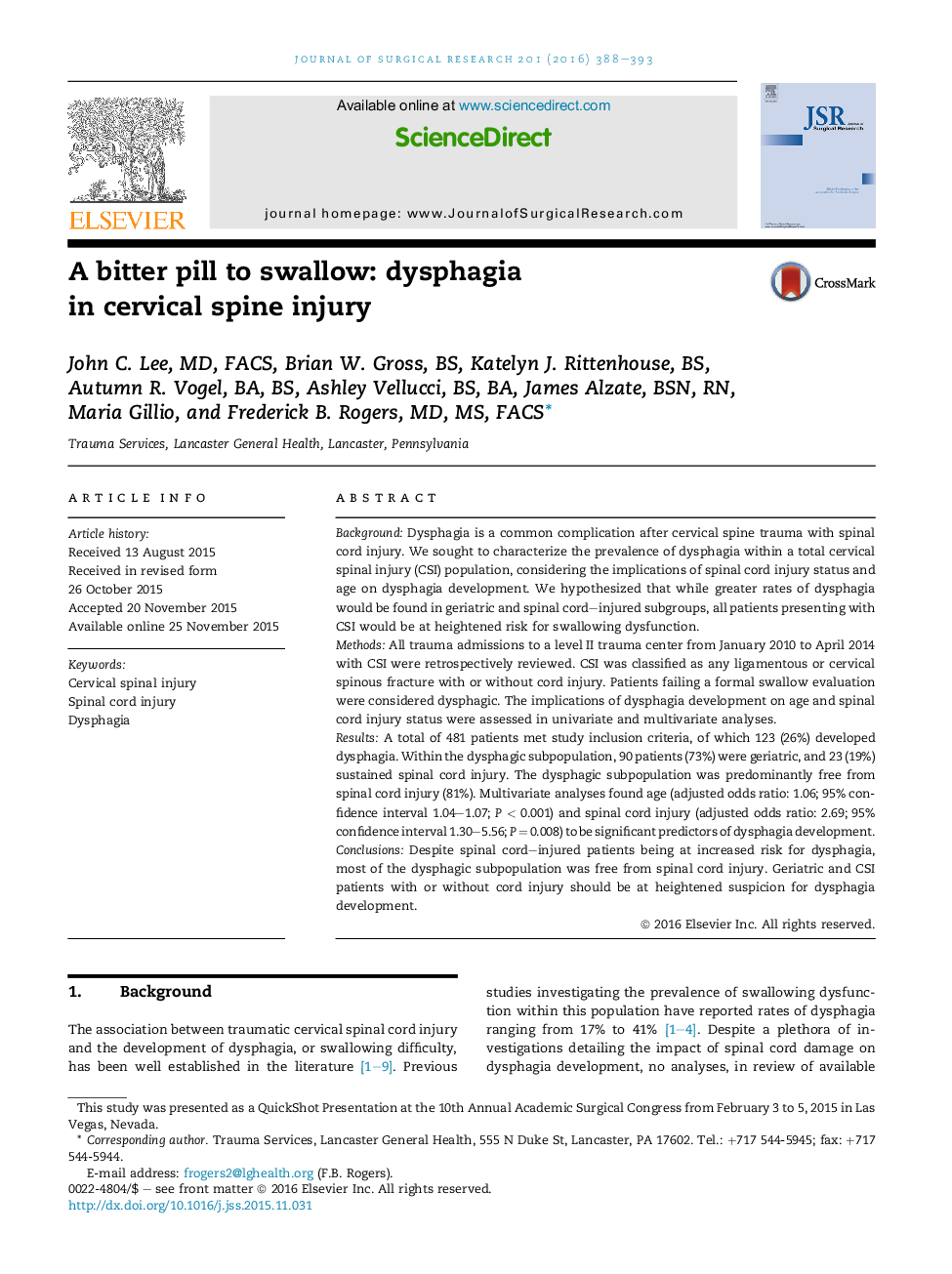| Article ID | Journal | Published Year | Pages | File Type |
|---|---|---|---|---|
| 4299399 | Journal of Surgical Research | 2016 | 6 Pages |
BackgroundDysphagia is a common complication after cervical spine trauma with spinal cord injury. We sought to characterize the prevalence of dysphagia within a total cervical spinal injury (CSI) population, considering the implications of spinal cord injury status and age on dysphagia development. We hypothesized that while greater rates of dysphagia would be found in geriatric and spinal cord–injured subgroups, all patients presenting with CSI would be at heightened risk for swallowing dysfunction.MethodsAll trauma admissions to a level II trauma center from January 2010 to April 2014 with CSI were retrospectively reviewed. CSI was classified as any ligamentous or cervical spinous fracture with or without cord injury. Patients failing a formal swallow evaluation were considered dysphagic. The implications of dysphagia development on age and spinal cord injury status were assessed in univariate and multivariate analyses.ResultsA total of 481 patients met study inclusion criteria, of which 123 (26%) developed dysphagia. Within the dysphagic subpopulation, 90 patients (73%) were geriatric, and 23 (19%) sustained spinal cord injury. The dysphagic subpopulation was predominantly free from spinal cord injury (81%). Multivariate analyses found age (adjusted odds ratio: 1.06; 95% confidence interval 1.04–1.07; P < 0.001) and spinal cord injury (adjusted odds ratio: 2.69; 95% confidence interval 1.30–5.56; P = 0.008) to be significant predictors of dysphagia development.ConclusionsDespite spinal cord–injured patients being at increased risk for dysphagia, most of the dysphagic subpopulation was free from spinal cord injury. Geriatric and CSI patients with or without cord injury should be at heightened suspicion for dysphagia development.
